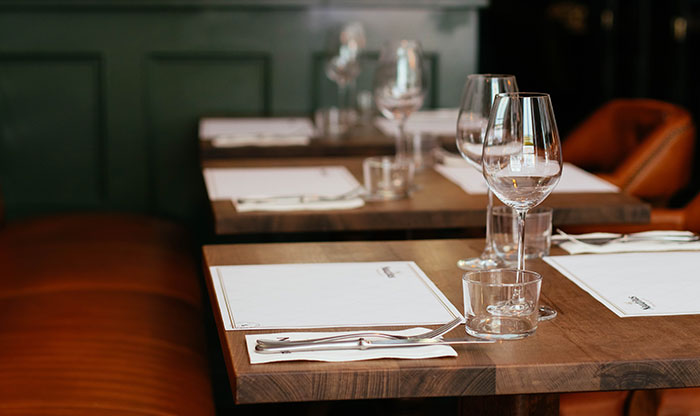How to Reduce the Risk of Slips, Trips, and Falls for Restaurant Workers
As a restaurant owner or manager, your job is to make sure that the business runs smoothly and successfully, and a large part of that involves ensuring the safety of your employees. Reducing the risk of slips and falls in your restaurant is one important step you can take, as these are some of the most common causes of unintentional injuries in the restaurant industry. According to the National Restaurant Association, slips and falls are also the greatest source of general liability insurance claims within the industry, and they're very expensive.
Many factors can contribute to slips, trips and falls in a restaurant, whether it's waiters, waitresses and bartenders or those who work behind the scenes, like chefs and dishwashers. An accident could be caused by a slippery spot on the floor, uneven surfaces, food spills, loose flooring, clutter, improper shoes or electrical cords. Take a look at the tips below to see how you can mitigate the risk of slips in the restaurant and make it a safer place for your employees.
Cut Down on Wet, Slippery Surfaces
There's a lot of action going on in restaurants. The question of how to prevent slips, trips, and falls in the kitchen poises a particular challenge. The pressure to get customers their orders in a timely manner can make it a little hectic at times, which, when mixed with food and water from prep work, could lead to dangerous puddles and slippery messes. To make your floors as dry and clean as possible, take the following steps.
-
Use slip-resistant floor materials or anti-skid tape in high-traffic or mess-prone areas and put down water-absorbent mats in entryways when it's wet outside and in front of sinks.
-
Choose floor cleaning and maintenance products with slip-resistant properties that are meant for the type of floor surface in your restaurant.
-
Educate your team on the correct cleaning procedures and materials.
-
Make sure there are plenty of trash bins near food prep stations to limit the amount of debris on the floor.
-
Clean up spills and puddles immediately, placing cautionary signage to warn employees and patrons of hazards.
Minimize Changes in Elevation
The height difference between surfaces should not exceed 1/2 of an inch. If an employee steps from a carpet onto a tiled floor and the height difference surpasses this amount, he or she is much more likely to trip. Walk around your establishment and evaluate each area where there's a change in floor surface, fixing any that may be problematic. Replace missing floor materials to ensure an even surface and consider placing signs in areas where there are potential trip hazards.
Ensure Sufficient Lighting
Lighting that's too dim or changes drastically from one area to another can impact an employee's vision. When something is unseen, it can be among the primary causes of slips, trips, and falls in the kitchen. You can eliminate this problem by installing proper lighting in work areas and walkways.
Get the Right Slip-resistant Shoes
Employee footwear is particularly important, as shoes with slippery soles could be a real danger to a restaurant worker. The benefits of non-slip shoes are well documented: The Liberty Mutual Research Institute for Safety's Center for Injury Epidemiology published a study in the journal Occupational and Environmental Medicine showing that slip-resistant shoes reduced the rate of slipping by more than 50 percent. The study surveyed workers and recorded environmental data at 36 fast-food restaurants in the U.S. over a 12-week period. After analyzing associations between floor surface conditions, floor cleaning frequency, slip risk and slip-resistant shoes, they were able to come up with the statistic.
All employees who work in an area that's regularly exposed to slippery walking surfaces should be required to wear safety shoes. For more details on how to prevent slips in the kitchen, you can make this much easier for them by giving them access to a corporate safety shoe program.
Employees and Your Bottom line.
Don't Forget To Share This Post!

6 Essential Leadership Tips for Executive Chefs
Leadership matters in any profession. Here are 6 essential leadership qualities executive chefs should possess to make their kitchens the best they can be.

Restaurant Safety: Some Ways to Reduce the Risk of Slips and Trips
Restaurant employees slip and fall on the job frequently. Here are some measures restaurants can take to minimize the risk of slips and falls.

Your New Food Business: Knowing FDA Regulations
The food industry is full of regulations. Restaurant owners must understand the legalese of food and the importance of being compliant with safety standards.